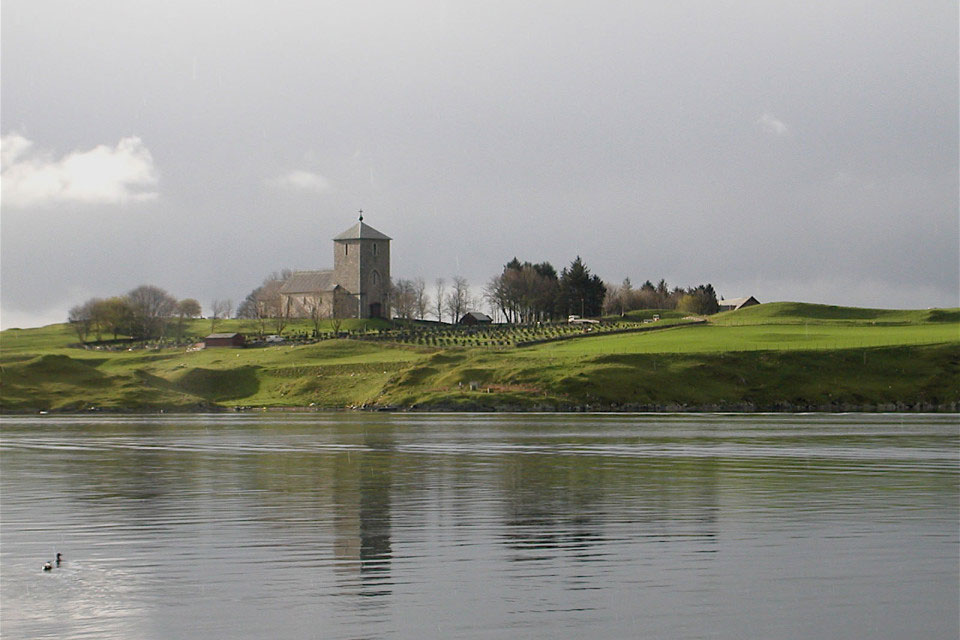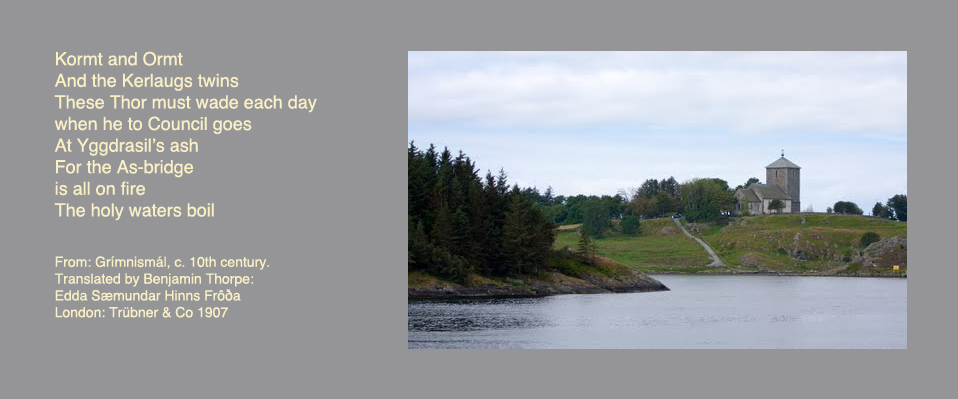The famous royal seat at Avaldsnes on the West Coast of Norway is best known as the residence of Harold Fairhair, but excavations tell us about a splendid royal hall from the 13th century
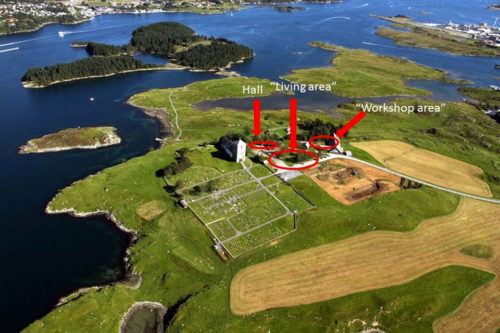
Nearly 4000 years ago, mighty chieftains already controlled Karmsundet, a narrow strait called “The North Way” which protected boats and ships from the open sea west of Karmøy. Living at Avaldsnes in the northeastern part of the Iceland, Karmøy, these chieftains were buried in impressive mounds, which still stands. It is likely, Avaldsnes was already a holy site at this time.
Much later, Snorri Sturluson wrote in the Sagas of the Kings (Heimskringla) that the name of Avaldsnes probably derived from Augvald, a mythic king from the migration period (6th to 7th centuries). His name has been interpreted to mean “ruler of the coast” as well as “he, who is held in awe” and points to the continued importance of the place through the next 2000 years.
Somewhat later – at the end of the 8th century – two mighty chieftains were buried nearby in the first Norwegian ship-burials. It is around this time (perhaps in the 10th century) a poet wrote in Grímnismál about the sacred character of the site and how Thor, the God of Thunder would wade every day through Karmsundet to reach Yggdrasil, the sacred tree of life. According to the singer, this was where the Ås-bridge (Bifrost), the holy rainbow bridge, was raised above the calm and warm waters.
Perhaps Grímnismál was composed to divert the most famous resident at Avaldsnes, Harold Hairfair, who is said to have chosen the place for his royal residence in c. 870. About him, Snorri tells, that after he had died in Rogaland, he was brought back to Avaldsnes and buried there in a mound. After his death in 930, his son Håkon the Good was involved in a fight over the succession with Eric Bloodaxe. It is told that a major battle took place at Avaldsness.
Later, Olav Trygvason (c. 960 – 1000) is said to have built the first church at Avaldsnes near where in the 13th century the church of St. Olav was raised. It is also told that he excavated some mounds to remove the heathen remains of human beings and cows. Commissioned by Håkon Håkonssen, the later stone church is still standing was one of only four collegiate churches in Medieval Norway. This church still stands as a witness to the continued royal investment in the place.
Due to this continued presence at the location, it has become easy to refer to Avaldsnes as an impressive landscape of power. It is however much more complicated to outline the chronology between the different layers of buildings. Erected on top of each other, archaeologists have been digging these buildings at the site since the 90s struggling to get a real sense of building phases and types of architecture.
Archaeology
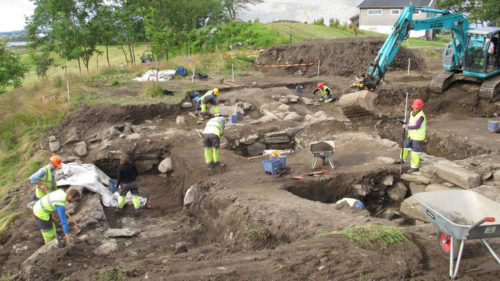 Apart from the Bronze age burial mounds lined up at Reheia, approximately a km west of Avaldsnes, the primary interest focus on the settlement from the migration period and later. With finds of large halls, villages and landing places with boathouses on the island, it is evident the place was settled throughout the whole period.
Apart from the Bronze age burial mounds lined up at Reheia, approximately a km west of Avaldsnes, the primary interest focus on the settlement from the migration period and later. With finds of large halls, villages and landing places with boathouses on the island, it is evident the place was settled throughout the whole period.
One of the important vestiges, which archaeologists have uncovered, were the remains of a Merovingian fortress protecting the settlement at Avaldsnes gave impetus to a reconsideration of the whole place. Apparently, the site was not just the large farm of a wealthy chieftain. It was an important centre with a extensive production area filled with workshops used for metalworking, salt-production, grain-drying etc. To protect the settlement, which was located on a slope, they built a four meter wide stone construction encased in wood and with an outer palisade. From the same time – dendrochronologically dated – are two boat burials from c. 720 CE. A small rowing ship it was recently suggested that inspiration had come from the burials at Sutton Hoo.
As far back as can be detected the living area – halls and royal courts – were located in between the workshop area and the later church.
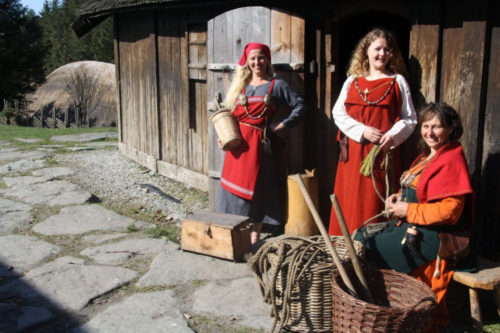 In connection with this archaeologists made a significant find in 2012, when they discovered the remnants of the medieval royal estate. Although not excavated entirely, they believe that the residence consisted of a large stone-built hall constructed sometime between 1240 and 1319. Because of the thick walls, it is presumed the hall had an upper storey as well as a cellar. At that time – in 2012 – the find was quickly covered up to protect the site for a time when funding would be available to do a proper excavation.
In connection with this archaeologists made a significant find in 2012, when they discovered the remnants of the medieval royal estate. Although not excavated entirely, they believe that the residence consisted of a large stone-built hall constructed sometime between 1240 and 1319. Because of the thick walls, it is presumed the hall had an upper storey as well as a cellar. At that time – in 2012 – the find was quickly covered up to protect the site for a time when funding would be available to do a proper excavation.
Now, in 2017, archaeologists are attempting to get an overview of the extent of the stone-built hall and the location of doors. One question is whether there was a free passage not only to the church but also to the harbour below by Karmsundet. It appears there was also a secret passageway, perhaps between the royal hall and the church.
Afterwards this information will surely be compared to another of the stone-buildings from that time, the so-called Håkon’s Hall in Bergen. measuring 37 x 16,4 m and with three storeys the hall is considered the largest secular medieval building still standing in Norway. Built of local stone with corners, window and door casings of worked soapstone the hall at Avaldsnes seems to belong to the same type of building. The hall at Avaldsnes is regarded as the fourth royal stone-hall known in Norway with others in Oslo and Tønsberg.
VISIT:
Opplev Avaldsness
Welcome to Avaldsnes
Kong Augvaldsvei 101, 4262 Avaldsnes
Postboks 234, 4299 Avaldsnes
Norway
The site consists of an Open-Air Museum, a Viking centre and the church.
SOURCES:
Avaldsnes – Norway Oldest Royal Throne
This website hosted by the Archaeological Museum in Stavanger holds extensive information about Arvaldsnes and the nearby museum
READ MORE:
Kongsgårdsprosjektet Avaldsnes – Stavanger Museum
The central Place of the Avaldsnes Area, SW Norway. An analysis of Elites and Central Functions along Karmsund 200 BC – AD 1000
By Håkon Reierson.
Bergen University, Master Thesis 2009.
READ ALSO:
